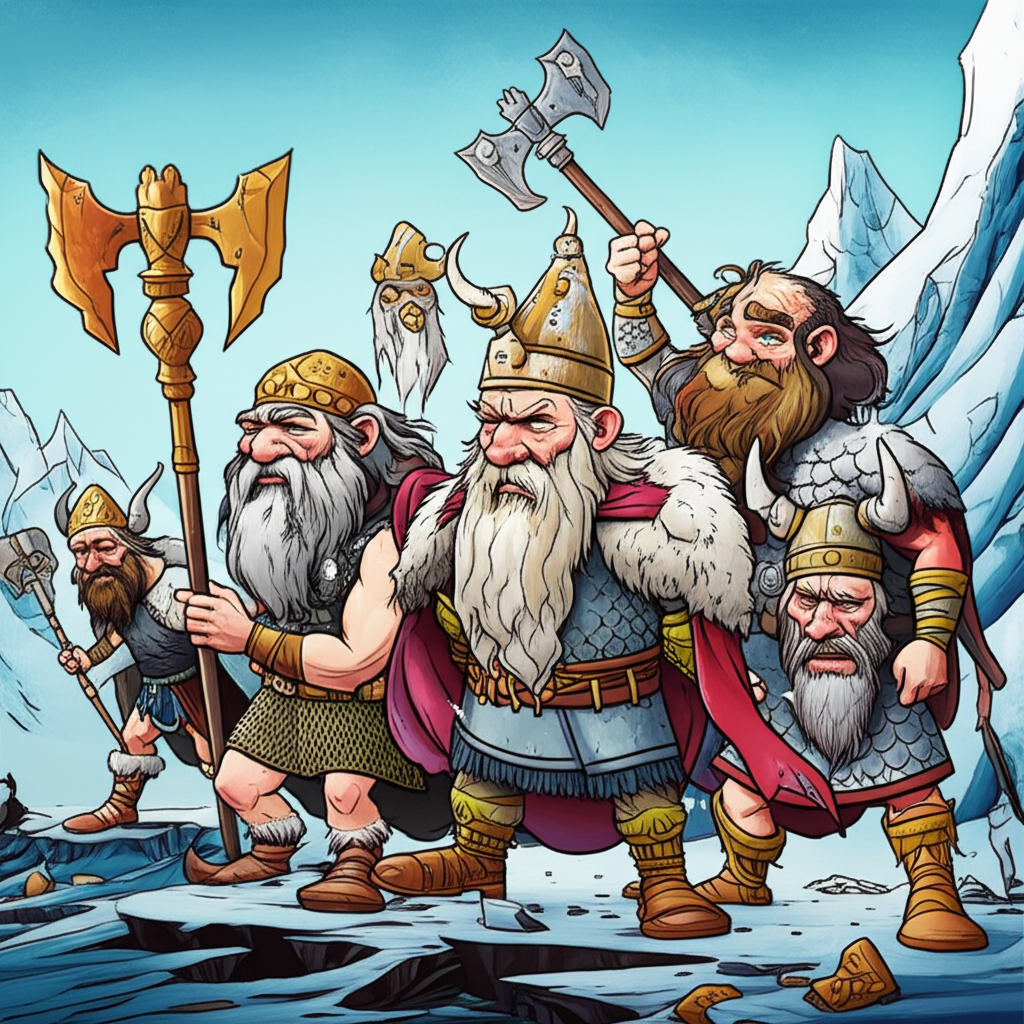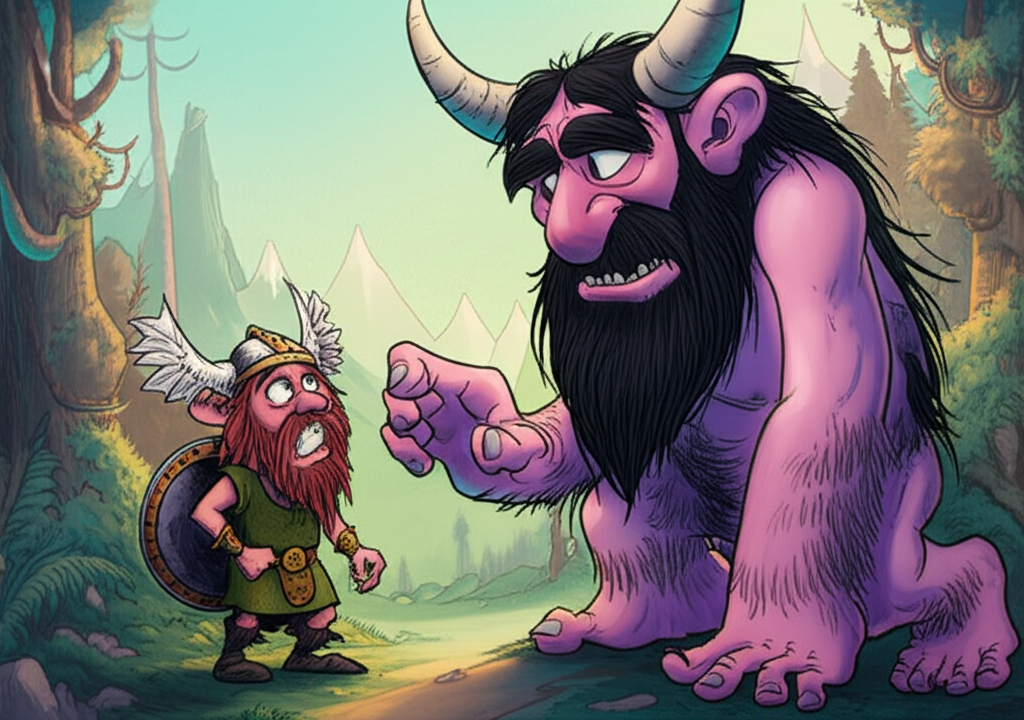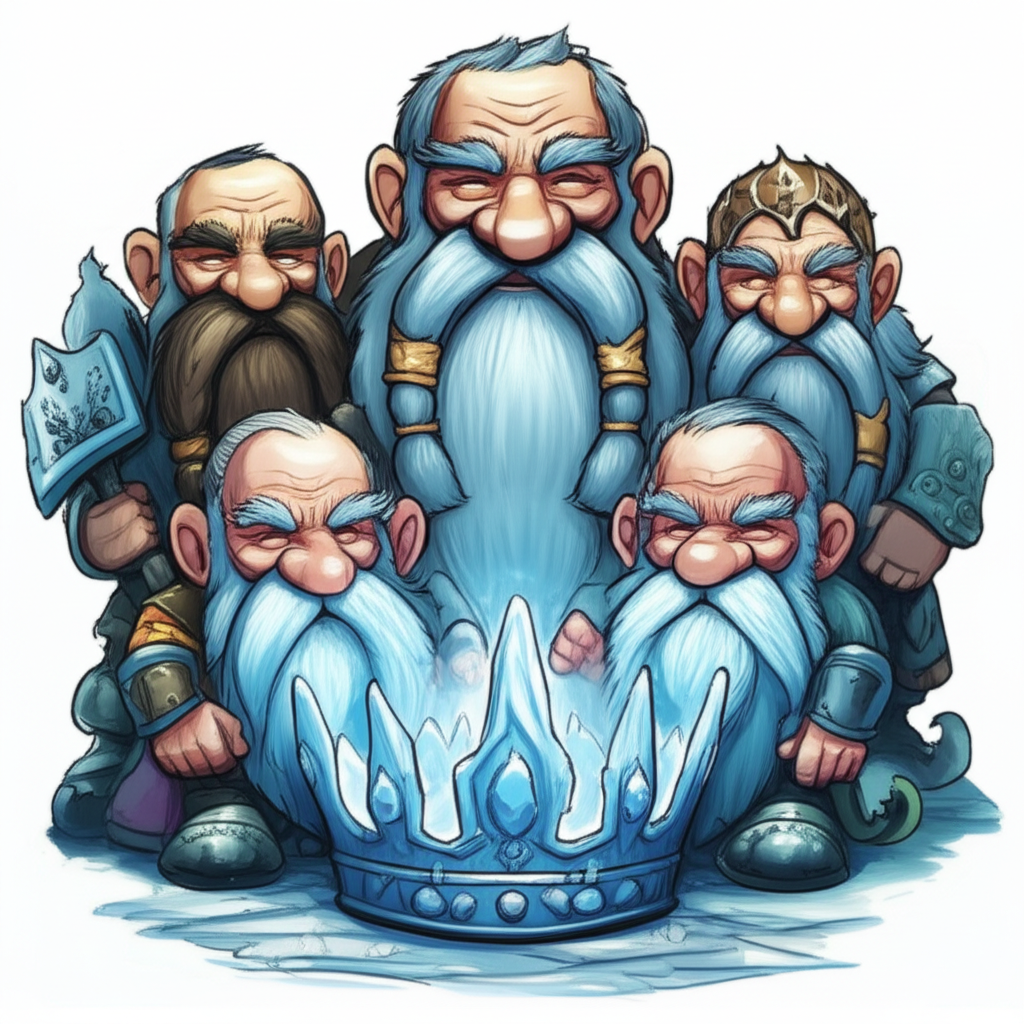
1. Introduction: A Glimpse into Ancient Narratives
The vast tapestry of human history is interwoven with countless stories, myths, and legends, each a window into the souls and societies of those who crafted them. Among these, the rich and complex narratives of Norse mythology stand out, offering a profound understanding of the world as perceived by the ancient Germanic peoples of Scandinavia. This particular account delves into one of the most pivotal events in their cosmic drama: the Aesir–Vanir War. More specifically, we will explore the profound and lasting aftermath of this conflict, a peace forged in the fires of devastation, whose echoes resonated through the very fabric of their imagined cosmos, touching even upon the primordial chill often associated with Niflheim. It is crucial to remember that this is a traditional story, a product of ancient human imagination and cultural expression, not a historical event or a set of beliefs to be adopted.
2. Origins and Cultural Background: Sagas of the North
This myth, like many others concerning the gods and the creation of the world, originates from the Viking Age and the preceding periods in Scandinavia, flourishing among communities nestled amidst rugged fjords, dense forests, and the vast, often tempestuous, northern seas. These were societies built on a blend of agriculture, seafaring, trade, and, at times, warfare. Their worldview was shaped by the harsh realities of their environment, where life was often precarious, and the forces of nature loomed large and awe-inspiring.
For these ancient people, the world was not a sterile, predictable place but a vibrant, often dangerous, arena where gods, giants, elves, and dwarves actively shaped existence. They viewed the cosmos as a series of interconnected realms, all held together by the colossal world-tree, Yggdrasil. Fate (wyrd) was a powerful, almost tangible force, yet bravery and honor in the face of it were paramount. Their myths provided not only entertainment but also frameworks for understanding natural phenomena, human nature, morality, and the cyclical nature of life, death, and rebirth, culminating in the prophesied Ragnarök. The tales of their gods, with all their flaws and glories, offered guidance and meaning in a challenging world.
3. Character and Realm Descriptions: The Divine Factions and the Primordial Mist
At the heart of the Aesir–Vanir War were two distinct, yet equally powerful, pantheons: the Aesir and the Vanir.
-
The Aesir: Primarily associated with war, sovereignty, order, and the sky. They were often seen as formidable warriors and wise rulers. Figures like Odin, the Allfather of wisdom, magic, and war; Thor, the mighty wielder of Mjölnir and protector of Midgard; and Tyr, the god of justice and heroic glory, represented their dominant characteristics. Symbolically, they embody the structured, often martial, aspects of existence, striving for order in a chaotic cosmos.
-
The Vanir: In contrast, the Vanir were deeply connected to fertility, prosperity, the sea, and the earth. They were also masters of foresight and a unique form of magic. Their prominent figures included Njörðr, god of the sea and wealth; Freyr, god of fertility, sunshine, and bountiful harvests; and Freyja, goddess of love, beauty, war, and seiðr (a powerful form of magic). Symbolically, the Vanir represented the life-giving, nurturing, and mystical forces of nature, crucial for the sustenance and well-being of the world.
-
Niflheim (The Misty Realm): While not a direct participant in the war, the concept of Niflheim holds symbolic weight in understanding the profound aftermath. Niflheim, meaning "Mist-Home," was one of the two primordial realms, a land of eternal ice, mist, and darkness. It was the source of the great rivers and the eventual dwelling place of Hel, queen of the dead. Symbolically, Niflheim represents the ancient, cold, formless void from which creation emerged, and to which some souls would return. Its presence in the cosmic understanding lent a stark, unyielding backdrop to existence, reminding the Norse of the deep, often chilling, forces that underpin reality, and the profound, irreversible changes that can occur, much like the peace that followed the war.
4. Main Story: A Peace Forged in Fire and Wisdom
The ancient narrative tells of a time when the nascent order of the cosmos was shattered by a conflict unlike any other: a war between the two great families of gods. The spark that ignited this cosmic conflagration was the arrival of Gullveig, a mysterious Vanir enchantress, among the Aesir. Her presence, her practice of seiðr, and her perceived greed for gold disturbed the Aesir, who thrice attempted to kill her, burning her body only for her to be reborn each time. This act of violence, interpreted by the Vanir as an unforgivable offense, plunged the realms into war.
For a time, the Aesir and Vanir clashed with devastating fury. Battles raged across the cosmic landscape, shaking the foundations of the Nine Realms. The Aesir, with their strength in arms and strategic prowess, faced the Vanir, who wielded powerful magic and an intimate connection to the forces of nature. Neither side could gain a decisive victory; the conflict became a costly stalemate, draining the energies of both pantheons and threatening to unravel the fragile balance of the world. The destruction was immense, a stark reminder of the primordial chaos that Niflheim represented, a state of being where all order could dissolve into mist and cold.
Eventually, both sides, exhausted and realizing the futility of continued bloodshed, sought a truce. They came together, not in triumph, but in a shared recognition of loss and the urgent need for peace. To seal this momentous accord, they performed a sacred ritual: each side spat into a great vat, mixing their essence to create a being of unparalleled wisdom, Kvasir. This act symbolized the merging of their distinct attributes and the birth of a new understanding from the crucible of conflict.
As a further testament to their newfound peace, a pivotal exchange of hostages took place. From the Vanir came Njörðr, the serene god of the sea, and his children, the radiant Freyr and the enchanting Freyja, to live among the Aesir. In return, the Aesir sent the wise Hœnir and the even wiser Mímir to the Vanir. While Hœnir was renowned for his indecisiveness without Mímir’s counsel, Mímir himself was a font of ancient knowledge. Unfortunately, the Vanir, displeased with Hœnir’s leadership, eventually beheaded Mímir. However, Odin, ever resourceful, preserved Mímir’s head, keeping it by a well to consult for wisdom, a poignant reminder that even peace comes with its own tragic costs and that wisdom, once gained, is never truly lost.
The aftermath of this war was not merely the cessation of hostilities but a profound integration. The Vanir gods brought their gifts of fertility, magic, and prosperity to the Aesir, enriching their domain and broadening their worldview. The Aesir, in turn, offered their strength, order, and strategic wisdom. The two families, once warring factions, became interwoven, forming a single, albeit complex, pantheon. This mingling reflected a deeper cosmic understanding: that order and chaos, war and peace, fertility and wisdom, were not mutually exclusive but necessary complements, much like the contrasting forces that shaped the universe from the icy depths of Niflheim and the fiery expanse of Muspelheim. The creation of Kvasir, the most profound outcome, solidified this transformation, for his wisdom, born of unity, was eventually transformed into the Mead of Poetry, inspiring all who partook of it—a direct legacy of the war and its ensuing peace.
5. Symbolism and Meaning: The Threads of Understanding
To the ancient Norse, the Aesir–Vanir War and its aftermath offered a powerful allegorical framework. The conflict itself represented the inherent tensions and struggles within existence—the clash between raw, fertile nature (Vanir) and structured, ordered society (Aesir). The devastating war underscored the destructive nature of unchecked conflict, leading to the realization that harmony and cooperation are essential for survival and progress.
The subsequent peace and the exchange of hostages symbolized the necessity of integration and compromise. It suggested that a truly robust and flourishing society, or even a balanced cosmos, requires the blending of different strengths and perspectives. The fertility of the Vanir was needed to sustain life, just as the order and protection of the Aesir were necessary for stability.
The creation of Kvasir from the shared essence of both sides was perhaps the most potent symbol. It represented the idea that true wisdom and creativity can emerge from the painful crucible of conflict, from the shared experiences of both suffering and reconciliation. Kvasir’s transformation into the Mead of Poetry further emphasized that knowledge and inspiration are precious legacies, often born from profound moments of transformation. The integration of the two pantheons illustrated a fundamental Norse concept: that even opposing forces must eventually find a way to coexist and contribute to the greater whole, leading to a more complete understanding of the world, from its fiery beginnings to its misty ends.
6. Modern Perspective: Echoes in Contemporary Culture
Today, the tales of the Aesir–Vanir War and its aftermath continue to captivate and inspire. In modern literature, these narratives are frequently reinterpreted in fantasy novels, poetry, and comic books, often exploring themes of conflict resolution, cultural assimilation, and the complex nature of power.
The most visible interpretations can be found in popular culture, particularly in film and television. Marvel’s cinematic universe, while heavily adapted, draws heavily from Norse mythology, with characters like Thor, Odin, and Freyja (though often reimagined) playing central roles, bringing these ancient stories to a global audience. TV series like "Vikings" and "Norsemen" also weave elements of the mythological worldview into their historical dramas, allowing viewers to engage with the cultural fabric that produced these tales. Video games, such as the "God of War" series and "Assassin’s Creed Valhalla," immerse players directly into richly imagined Norse worlds, where the Aesir, Vanir, and the various realms are integral to the gameplay and narrative.
Academically, these myths are studied in cultural anthropology, comparative religion, and literary analysis. Scholars examine their structures, archetypes, and their reflection of ancient societal values, often exploring their psychological resonance (as in Jungian archetypes). These modern interpretations, while often taking creative liberties, serve to keep these ancient stories alive, demonstrating their enduring power to entertain, educate, and provoke thought about fundamental human experiences.
7. Conclusion: The Enduring Power of Story
The Aesir–Vanir War and its profound aftermath, culminating in a hard-won peace and the birth of wisdom, stands as a testament to the vivid imagination and deep philosophical insights of the ancient Norse. It is a compelling narrative that speaks of conflict, sacrifice, reconciliation, and the forging of new understanding from old divisions. As we explore such stories, it is essential to remember that they are cultural artifacts, rich tapestries woven from the threads of human experience and perception, not a call to belief or practice.
As Muslims, we recognize that only Allah (SWT) is the true Creator and Sustainer of all existence, the One without peer or partner, Whose power and wisdom encompass everything. These ancient myths, therefore, serve not as rival truths, but as fascinating examples of how diverse cultures throughout history have sought to explain the world around them, to grapple with universal questions of good and evil, creation and destruction, and the search for meaning. They remind us of the enduring power of storytelling, a fundamental human tradition that allows us to pass down cultural heritage, ignite imagination, and reflect on the myriad ways humanity has sought to understand its place in the grand design of the cosmos.





